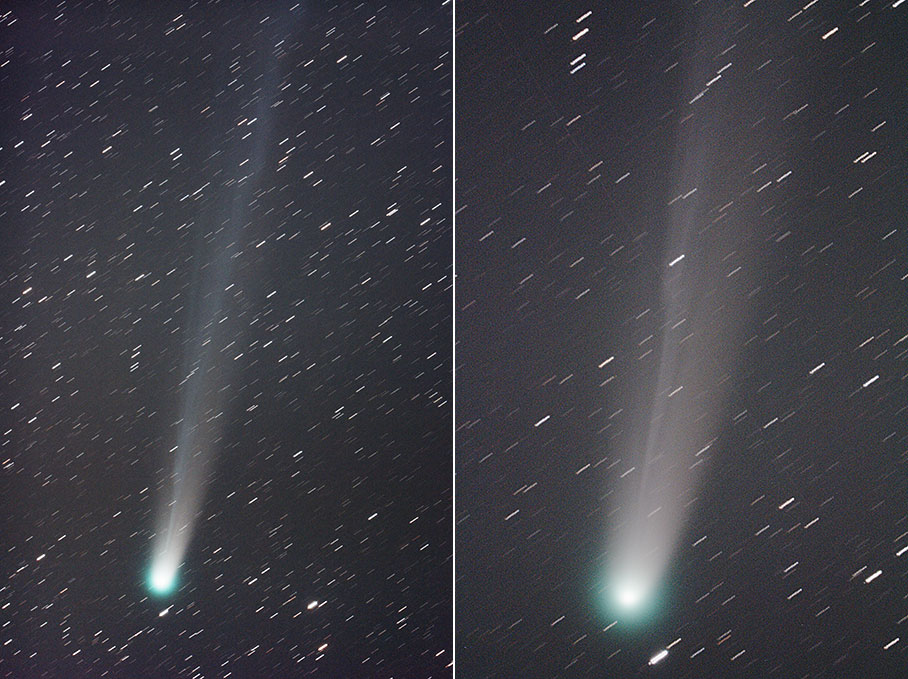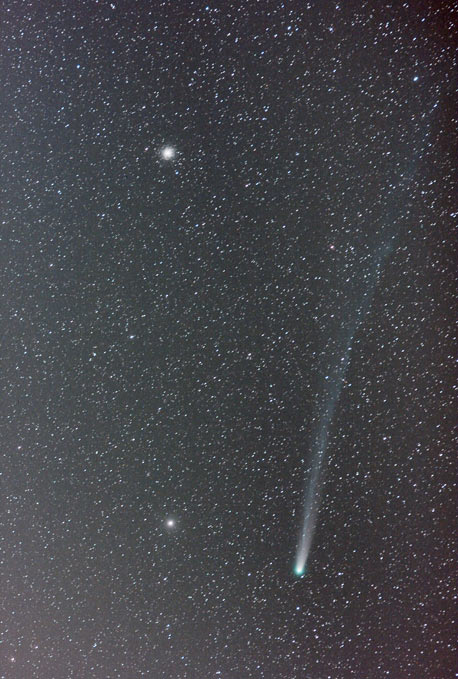| Date & Time: | (Left) Dec 13 2013, from 27:53 to 28:21 JST(+0900), 3min. ×10 |
| (Right) Dec 13 2013, from 28:40 to 29:02 JST(+0900), 3min. ×8 |
| Optical: | (Left) TAKAHASHI 16cm(6.3") epsilon (f=530mm, F3.3) |
| with IDAS LPS-P2-FF light-pollution suppression filter |
| (Right) VIXEN 20cm(7.9") VISAC with a conversion lens (f=1278mm, F6.4) |
| with BaaderPlanetarium Moon&Skyglow filter |
| Auto-guided with TAKAHASHI EM-200 Equatorial |
| Digital Camera: | Canon EOS 550D (Remodeled) |
| Location: | Hiraiso, Hitachi-naka city, Ibaraki pref. |
| Date & Time: | Dec 13 2013, from 28:40 to 29:01 JST(+0900) |
| Composed 8 shots with 3min. exposed |
| Optical: | AF zoom-Nikkor ED 80-200mmF2.8 (f=135mm, F4.0) |
| with Astronomik CLS-CCD filter |
| Auto-guided with TAKAHASHI EM-200 Equatorial |
| Digital Camera: | Canon EOS 600D (Remodeled) |
| Location: | Hiraiso, Hitachi-naka city, Ibaraki pref. |






